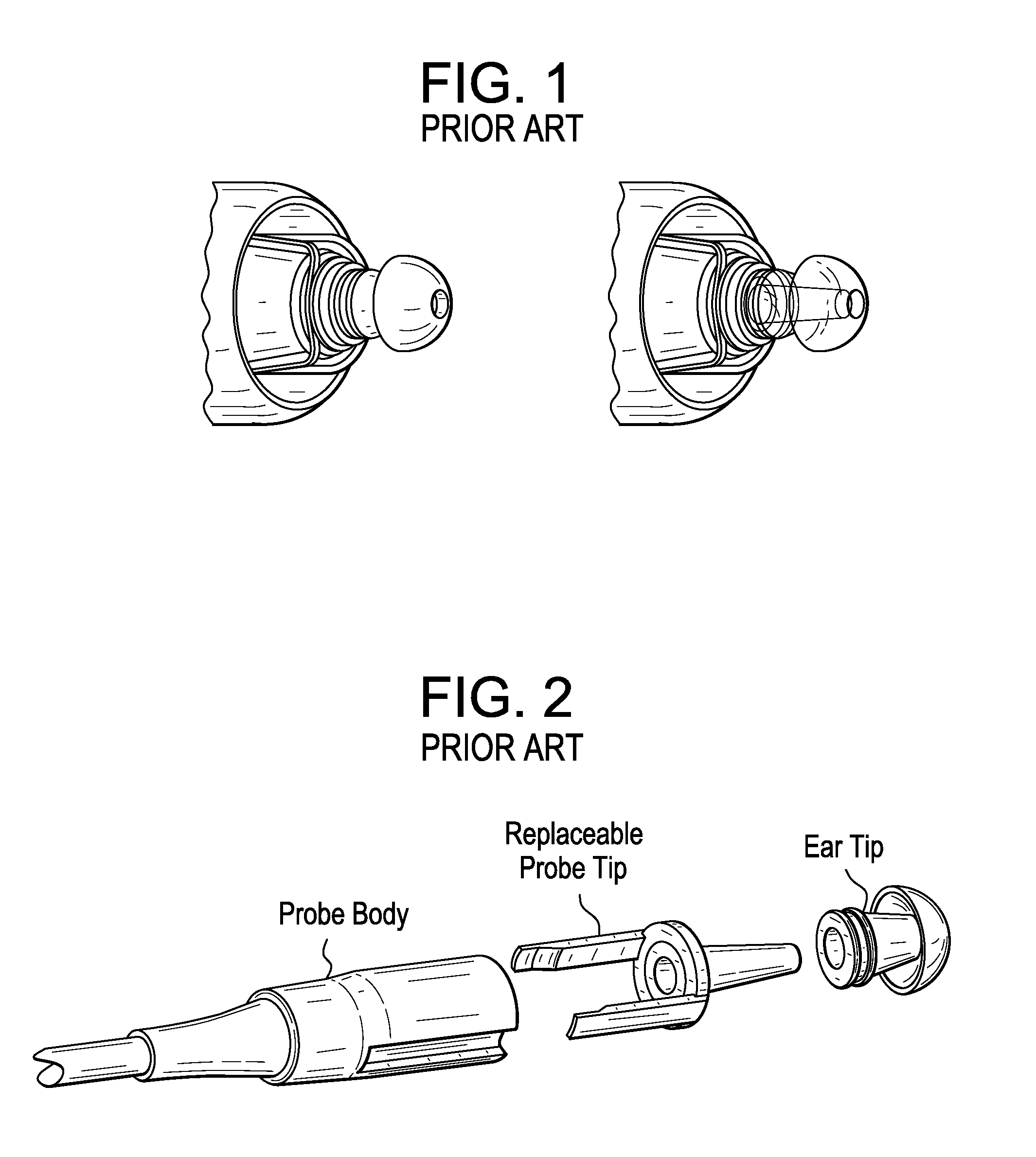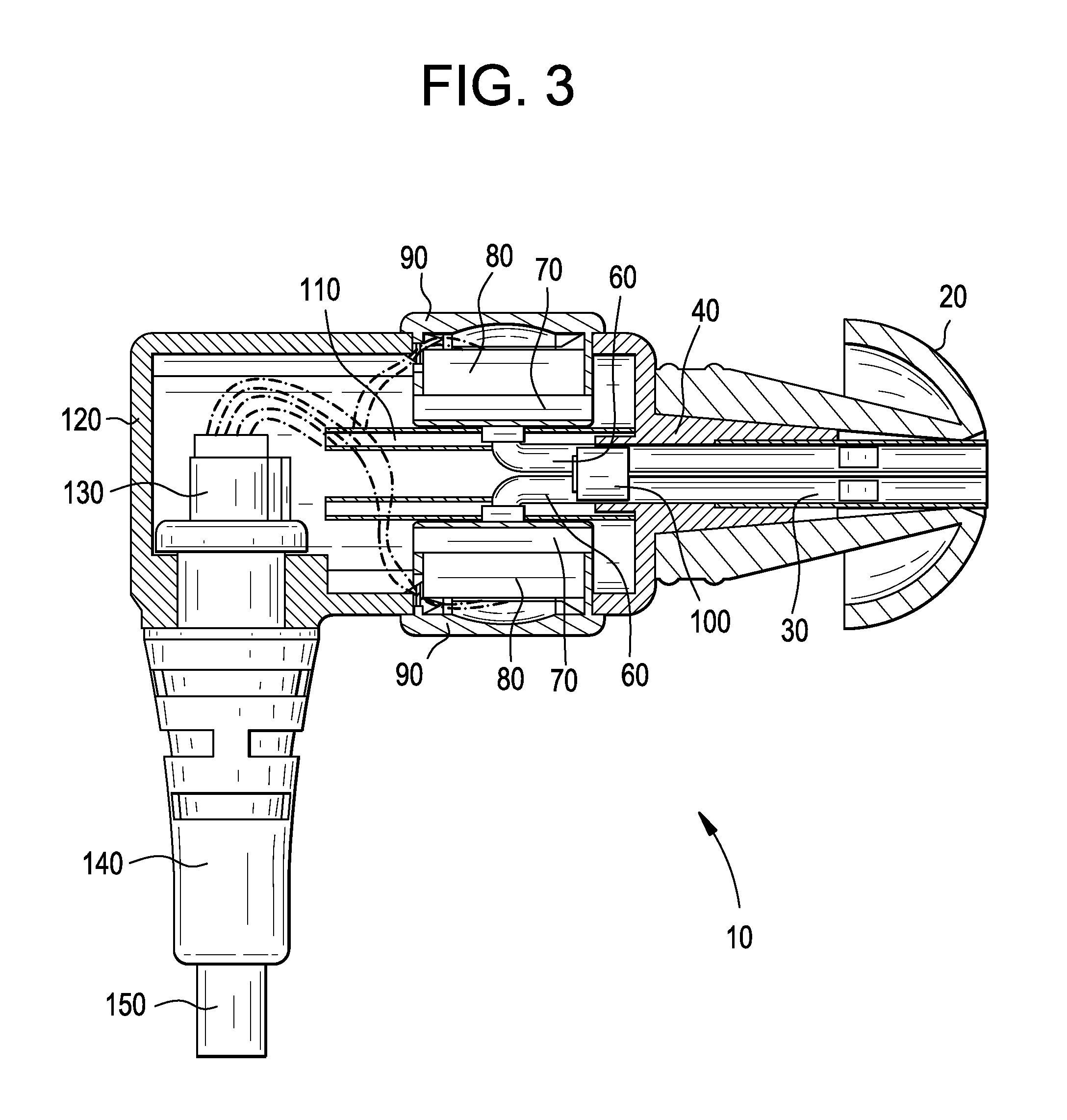Hearing testing probe apparatus with digital interface
a technology of hearing testing and digital interface, which is applied in the field of hearing testing probes, can solve the problems of compromising the accuracy of assessment, the inability to perform repeatable and consistent measurements with currently available commercial hearing testing probes, and the less accurate current calibration methods
- Summary
- Abstract
- Description
- Claims
- Application Information
AI Technical Summary
Problems solved by technology
Method used
Image
Examples
Embodiment Construction
[0041]Embodiments of the present technology provide a hearing testing probe with a user-replaceable coupling member for interfacing to an ear canal. Embodiments of the present technology provide hearing testing probes placed within ear canals that are coupled via a digital interface to an instrument that monitors the condition within the ears.
[0042]FIGS. 3-4 and 7-8 illustrate side views in cross-section of exemplary embodiments of the hearing test probe 10 used in accordance with an embodiment of the present technology. FIGS. 5 and 9 illustrate exploded side views of exemplary embodiments of the hearing test probe 10. FIG. 14 illustrates a view of an exemplary hearing testing probe 10 and probe tube 30 used with an elastomeric eartip 20. FIG. 15 illustrates a view of an exemplary hearing testing probe 10 and probe tube 30 with an adhered to eartip 20.
[0043]Referring to FIGS. 3-5, 7-9 and 14-15, certain embodiments of a hearing testing probe 10 include a cable 150 for communicating ...
PUM
 Login to View More
Login to View More Abstract
Description
Claims
Application Information
 Login to View More
Login to View More - R&D
- Intellectual Property
- Life Sciences
- Materials
- Tech Scout
- Unparalleled Data Quality
- Higher Quality Content
- 60% Fewer Hallucinations
Browse by: Latest US Patents, China's latest patents, Technical Efficacy Thesaurus, Application Domain, Technology Topic, Popular Technical Reports.
© 2025 PatSnap. All rights reserved.Legal|Privacy policy|Modern Slavery Act Transparency Statement|Sitemap|About US| Contact US: help@patsnap.com



